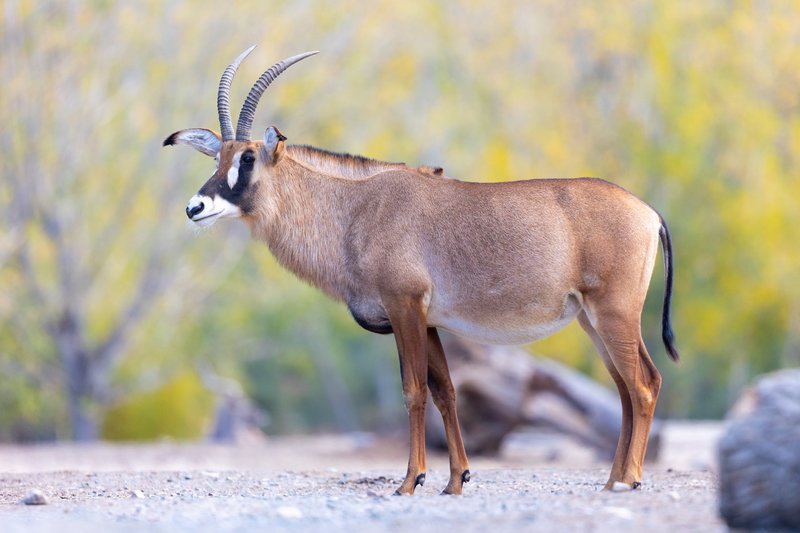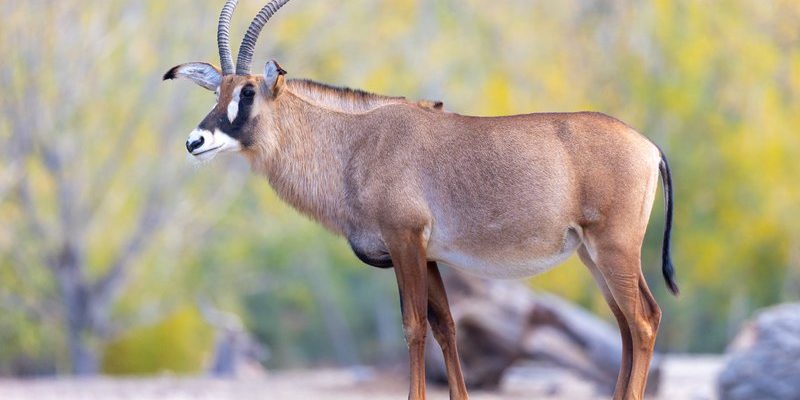
The roan antelope, known for its beautiful tawny coat and impressive horns, is native to the grasslands of Africa and can be found in countries like Zimbabwe, Zambia, and parts of West Africa. Unfortunately, as human activities encroach upon their natural habitat, these majestic animals are struggling to survive. In our exploration of whether the roan antelope is endangered, we’ll dive into the current conservation status, the threats they face, and the efforts being made to protect them. Grab your coffee; let’s jump into the wild world of the roan antelope!
Understanding the Roan Antelope
The roan antelope is one of the larger species of antelope, weighing up to 500 pounds. Think of it as the extroverted cousin at the family reunion—tall, impressive, and often the center of attention. With its long, curved horns and distinctive facial markings, it’s not just beautiful; it’s built for survival in the challenging environments of open savannas and woodlands.
These animals are social creatures, living in herds that can number from a handful to several dozen individuals. Roan antelopes are herbivores, primarily grazing on grasses. They have a keen sense of hearing and eyesight, which helps them detect predators from afar. Picture them standing tall in the tall grass, scanning their surroundings with those big, watchful eyes—it’s a sight to behold!
However, despite their beauty and adaptability, roan antelopes are not immune to danger. The population has been declining, and it’s crucial to understand why.
The Current Conservation Status
So, how endangered is the roan antelope? According to the International Union for Conservation of Nature (IUCN), the roan antelope is classified as Vulnerable. This means they face a high risk of extinction in the wild if the current trends continue. To put it in perspective, their numbers have dropped significantly over the past few decades. Across Africa, estimates suggest fewer than 25,000 roan antelopes remain, and in some areas, they might even be at risk of local extinction.
The decline can primarily be traced back to habitat loss and poaching. With agricultural expansion and human settlements encroaching on their habitats, roan antelopes are losing both their homes and access to food. It’s like being evicted from your favorite cozy coffee shop and finding yourself in a busy, noisy street instead.
Main Threats to the Roan Antelope
The challenges roan antelopes face are multi-faceted. Here are the main threats:
- Habitat Loss: As more land is converted for agriculture, roan antelopes lose the grasses and space they depend on for survival. Encroaching farms and settlements fragment their habitats, making it tough for them to find food and mates.
- Poaching: Sadly, these gentle giants are targeted for their horns and meat. Poaching can rob entire populations of their members, severely disrupting the social structures within herds.
- Human-Wildlife Conflict: As humans and wildlife intersect, conflicts can arise. For example, when roan antelopes wander into agricultural areas, they may be seen as pests, leading to fatal encounters.
Each of these threats compounds the problems the roan antelope faces. Just imagine trying to navigate a bustling street while carrying a heavy load; that’s a bit like what these animals are dealing with daily, and it’s not going to get easier without intervention.
Conservation Efforts in Action
Despite the challenges, there’s hope! Various conservation organizations and local governments are stepping up to protect the roan antelope. Here are some of the exciting efforts taking place:
- Protected Areas: Many countries have established wildlife reserves and national parks where roan antelopes can thrive away from human interference. These protected areas serve as safe havens, allowing populations to stabilize and potentially grow.
- Community Involvement: Engaging local communities in conservation efforts is crucial. When people see the value of preserving wildlife, they often become advocates for protecting these animals and their habitats.
- Anti-Poaching Initiatives: Teams are working tirelessly to combat poaching through improved surveillance and stronger laws. You might be surprised by the impact of using technology, like drones, to monitor wildlife and detect poachers in real-time.
These initiatives represent a bright spot in the fight for the roan antelope. They highlight the power of collective action and the importance of collaboration between various stakeholders.
The Role of Zoos and Captive Breeding Programs
Zoos and wildlife centers play a vital role in conserving roan antelopes, especially when wild populations are dwindling. Many facilities have launched captive breeding programs aimed at increasing numbers. Just like a safety net, these programs ensure that if something happens to wild populations, we won’t lose the species entirely.
Captive breeding efforts focus on creating genetically diverse populations to maximize the chances of successful reintroduction into the wild. Plus, keeping the public informed and engaged can help build support for conservation. Visitors learn about these amazing animals, which can inspire future generations to advocate for wildlife protection.
What You Can Do to Help
You might be wondering, “What can I do?” There are several ways individuals can contribute to conservation efforts, even from afar:
- Educate Yourself and Others: The more you know about the roan antelope and other endangered species, the more you can advocate for their protection.
- Support Conservation Organizations: Consider donating to reputable wildlife conservation organizations that work to protect roan antelopes and their habitats.
- Reduce Your Footprint: Being a more sustainable consumer can lessen the impact on wildlife. For instance, choosing products that are sustainably sourced can help reduce habitat destruction.
Every little action can have a significant impact. Just like tiny ripples in a pond, your contributions can create waves of change in conservation.
The Future of the Roan Antelope
The future of the roan antelope hangs in the balance. It’s clear that without continued efforts and greater awareness, their situation could worsen. However, there’s also a growing movement towards safeguarding these magnificent creatures and their habitats.
As conservation strategies evolve and communities become more involved, we can hold onto hope. Programs that engage local populations and strengthen protections in key habitats are just a few ways we can change the narrative for the roan antelope. Together, we can foster a future where these remarkable animals once again roam freely across the grasslands.
Conservation is a shared journey, and each of us plays a part in protecting our planet’s wildlife. Let’s keep the conversation going and work towards a world where the roan antelope thrives!

